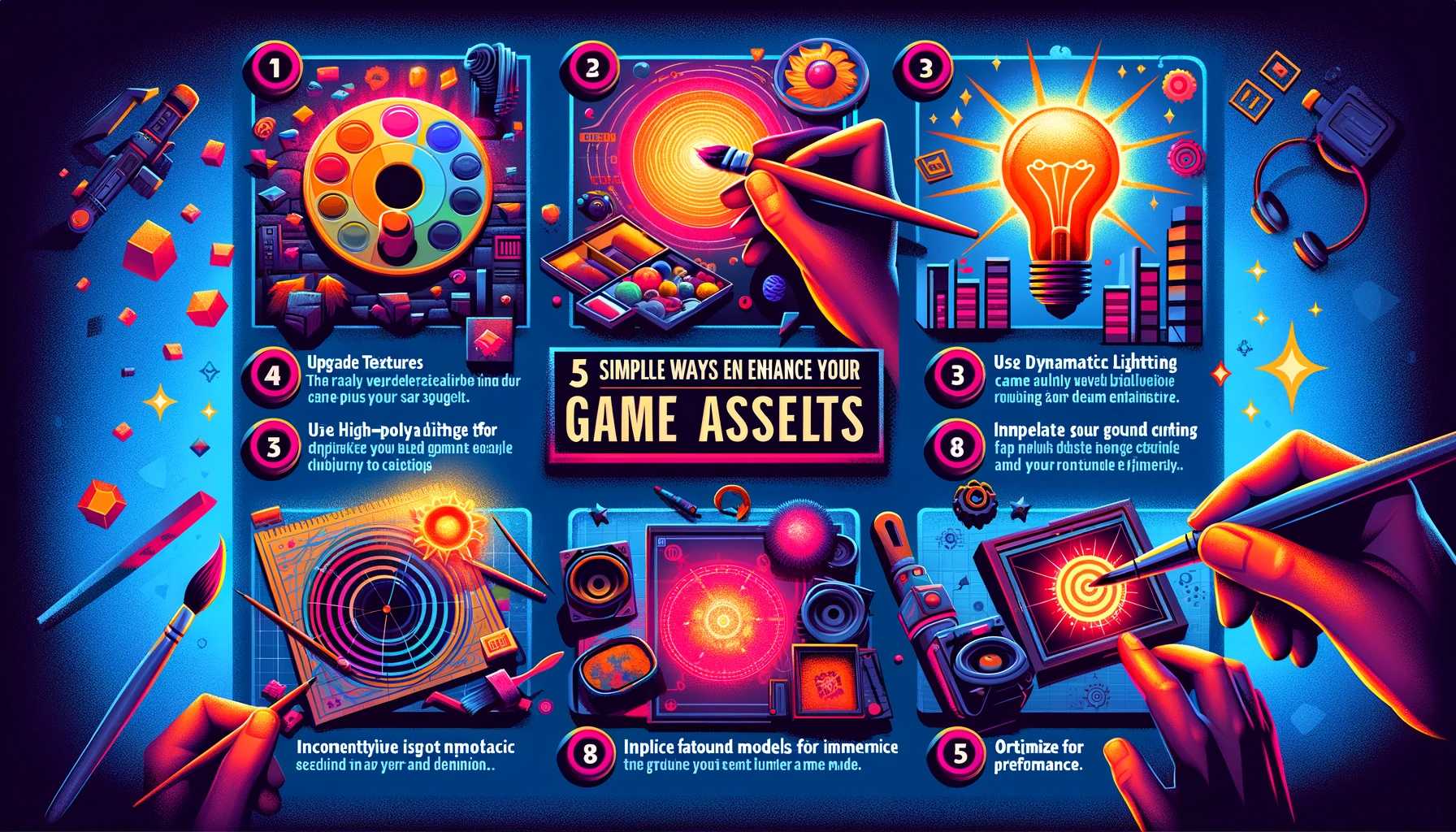In the competitive landscape of game development, creating visually stunning and immersive game assets is key to captivating players and standing out from the crowd. From characters and environments to animations and special effects, every element plays a crucial role in shaping the player experience. So, how can you elevate your game assets to the next level? Let's explore five simple yet effective strategies to improve your game assets and take your game to new heights.
1. Prioritize Quality Over Quantity
When it comes to game assets, quality always trumps quantity. Instead of inundating your game with a multitude of mediocre assets, focus on creating a smaller selection of high-quality assets that make a lasting impression on players. Invest time and resources into refining the details, optimizing the performance, and ensuring consistency across all aspects of your assets.
Pay attention to the fundamentals of design, such as composition, color theory, and readability, to create visually appealing assets that draw players into your game world. Utilize techniques such as texture mapping, shading, and lighting to add depth and realism to your environments and characters. Remember, it's better to have a few exceptional assets than a plethora of mediocre ones.
2. Embrace Iteration and Feedback
Iterative design is a cornerstone of successful game development, and the same holds true for game assets. Don't be afraid to iterate on your assets multiple times, refining and improving them based on feedback from peers, playtesters, and fellow developers. Solicit feedback from a diverse range of perspectives to gain valuable insights and identify areas for improvement.
Create a feedback loop where you regularly share your work-in-progress assets with others and incorporate their feedback into your revisions. Embrace constructive criticism as an opportunity for growth and refinement, rather than taking it as a personal affront. By iterating on your assets and incorporating feedback throughout the development process, you'll ensure that they meet the highest standards of quality and polish.
3. Optimize for Performance
In today's gaming landscape, performance optimization is crucial for ensuring a smooth and seamless player experience across a wide range of devices and platforms. Take care to optimize your game assets for performance by minimizing file sizes, reducing polygon counts, and optimizing textures and animations.
Utilize techniques such as LOD (Level of Detail) modeling to dynamically adjust the level of detail in your assets based on their distance from the camera, ensuring optimal performance without sacrificing visual fidelity. Implement efficient rendering techniques such as batching and culling to minimize draw calls and improve frame rates.
Additionally, consider the constraints of target platforms and devices when designing your assets. Tailor your assets to the specifications of each platform, optimizing them for performance while still maintaining visual quality and integrity. By prioritizing performance optimization in your asset creation process, you'll ensure that your game runs smoothly and efficiently on a variety of hardware configurations.
4. Leverage Asset Libraries and Tools
Creating game assets from scratch can be a time-consuming and resource-intensive process, especially for indie developers and small teams with limited resources. Fortunately, there are a plethora of asset libraries, tools, and resources available that can streamline the asset creation process and help you achieve professional-quality results with minimal effort.
Explore online marketplaces and asset stores such as the Unity Asset Store, Unreal Engine Marketplace, and Blender Market to find pre-made assets, textures, models, animations, and more. Leverage asset creation tools and software packages such as Blender, Maya, Substance Painter, and ZBrush to create custom assets tailored to your game's unique needs.
Moreover, consider collaborating with other developers, artists, and designers to share resources, expertise, and workload. Join online communities, forums, and social media groups dedicated to game development to connect with like-minded individuals and tap into a wealth of knowledge and resources. By leveraging asset libraries and tools, you can expedite the asset creation process and focus your efforts on other aspects of game development.
5. Tell a Compelling Story Through Your Assets
Great game assets do more than just look good – they tell a story and evoke emotion, immersing players in the game world and driving the narrative forward. Infuse your assets with personality, character, and narrative depth to create a cohesive and immersive player experience.
Consider the backstory, motivations, and personality traits of your characters when designing their appearances and animations. Use environmental storytelling techniques to convey mood, atmosphere, and lore through your environments and props. Incorporate subtle details, visual cues, and interactive elements that invite players to explore, discover, and uncover the secrets hidden within your game world.
Moreover, strive for consistency and coherence in your art style and visual language to maintain immersion and enhance the player's sense of presence within the game world. Whether it's through hand-crafted environments, meticulously designed characters, or breathtaking special effects, let your assets tell a compelling story that resonates with players long after they've put down the controller.
Conclusion: Elevate Your Game Assets Today
In conclusion, improving your game assets is essential for creating a memorable and engaging player experience. By prioritizing quality over quantity, embracing iteration and feedback, optimizing for performance, leveraging asset libraries and tools, and telling a compelling story through your assets, you can elevate your game to new heights and captivate players around the world.
So, roll up your sleeves, sharpen your skills, and embark on the journey of enhancing your game assets today. With dedication, creativity, and a commitment to excellence, you'll create game assets that leave a lasting impression and cement your place in the annals of game development history. Happy asset creation!
